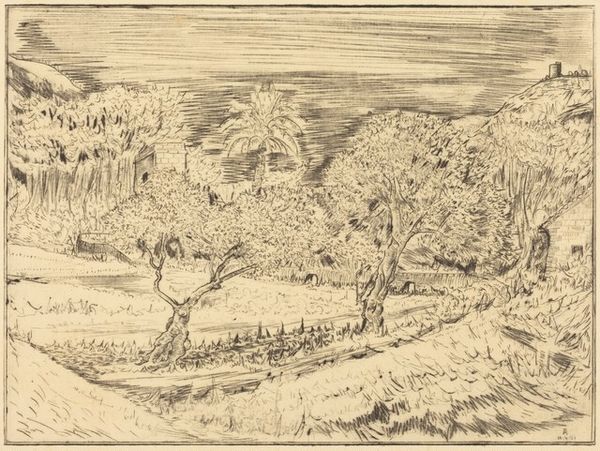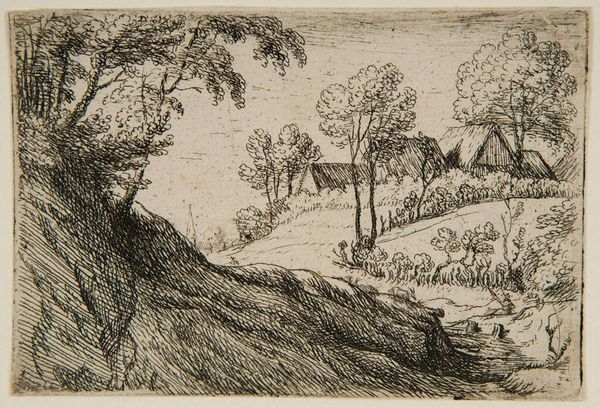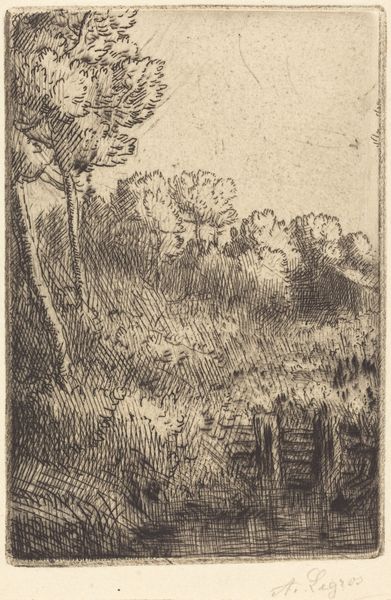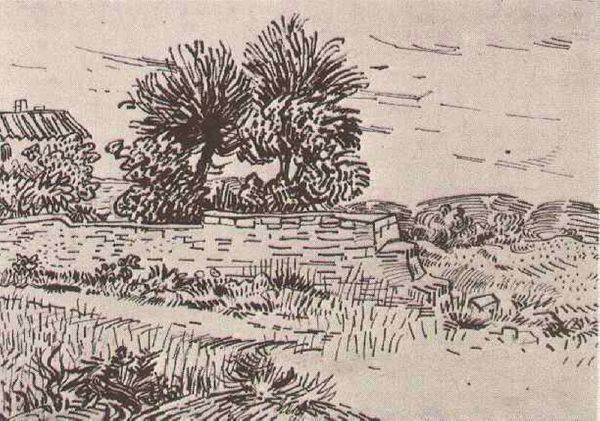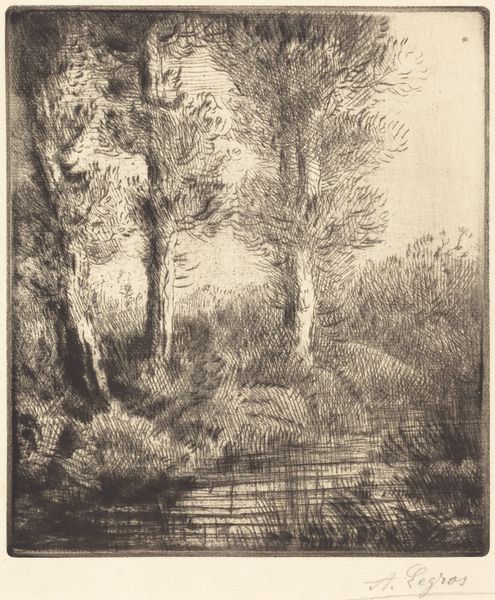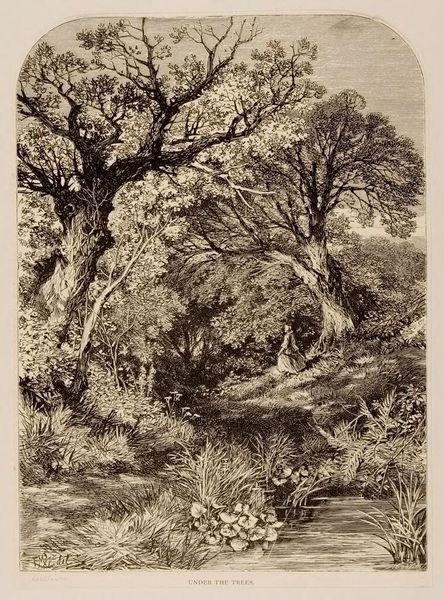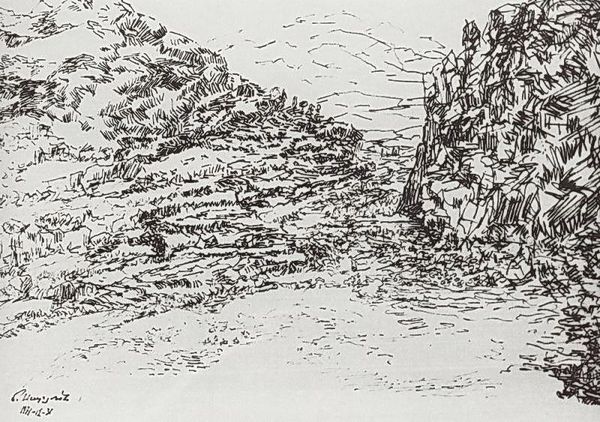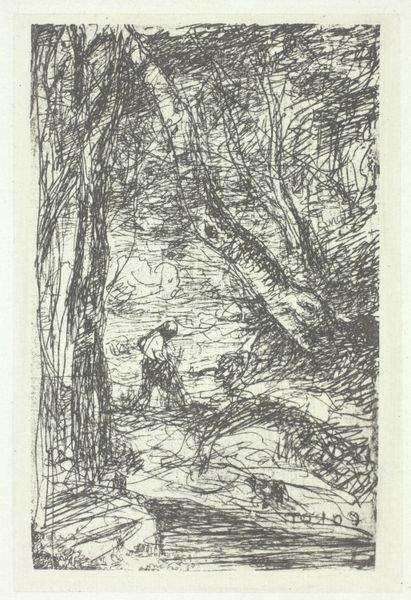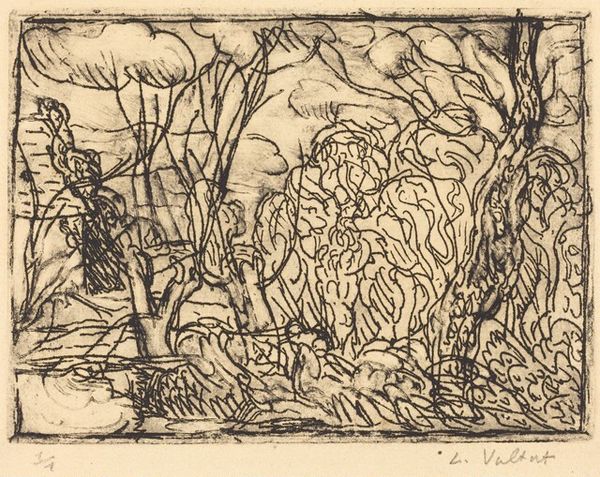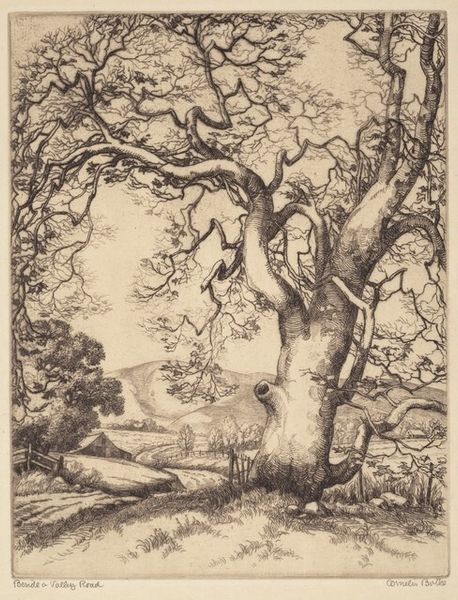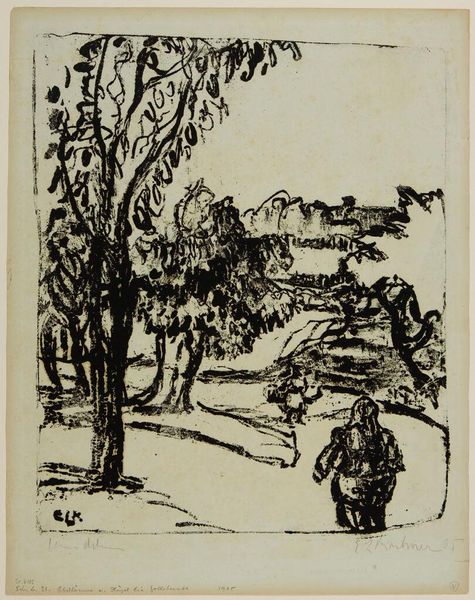
Copyright: Grace Albee,Fair Use
Editor: Here we have "Road to Quimper," a pen and ink drawing made in 1932 by Grace Albee. There's something quite stark about the high contrast, and I'm immediately drawn to the almost claustrophobic effect created by the trees framing what appears to be a small building in the distance. What compositional elements stand out to you in this piece? Curator: Immediately, I’m compelled to consider the foreground’s assertive texture and the calculated interplay between light and shadow. Albee meticulously crafted depth using a complex network of lines; the hatching and cross-hatching create a remarkable tonal range given the medium. Consider how the density of the linework informs the textural details of each trunk, for example. Editor: Yes, I can definitely see how she built up form with the lines. It gives the trees a very tangible, almost tactile presence. How does this contribute to the overall aesthetic? Curator: Precisely. This creates a powerful tension between the dense foreground and the more vaguely defined space beyond the trees. We find ourselves in a space where structure confronts the organic. The graphic rendering flattens perspectival recession and creates an active oscillation between surface and depth, underscoring the artwork as constructed object, a designed space. Editor: So you’re saying it’s less about accurately depicting a landscape and more about the artist’s manipulation of form and line to create a visual experience? Curator: Quite so. Albee is less concerned with mimetic representation than with exploiting the formal potential of the medium itself, the graphic properties, the tonal values produced by the act of inking a surface. How do you interpret the use of high contrast? Editor: I think the strong contrast heightens the sense of drama and emphasizes the geometric qualities of the trees and buildings. It's really about the balance and relationships between the different shapes. Curator: Indeed. Considering this exchange of foreground-background relations reveals the semiotic range. It underscores the inherent tension within a constructed reality. Editor: I never thought of it that way before. I see how analyzing the lines and forms reveal so much more than simply looking at it as a picture of a landscape. Thanks!
Comments
No comments
Be the first to comment and join the conversation on the ultimate creative platform.
